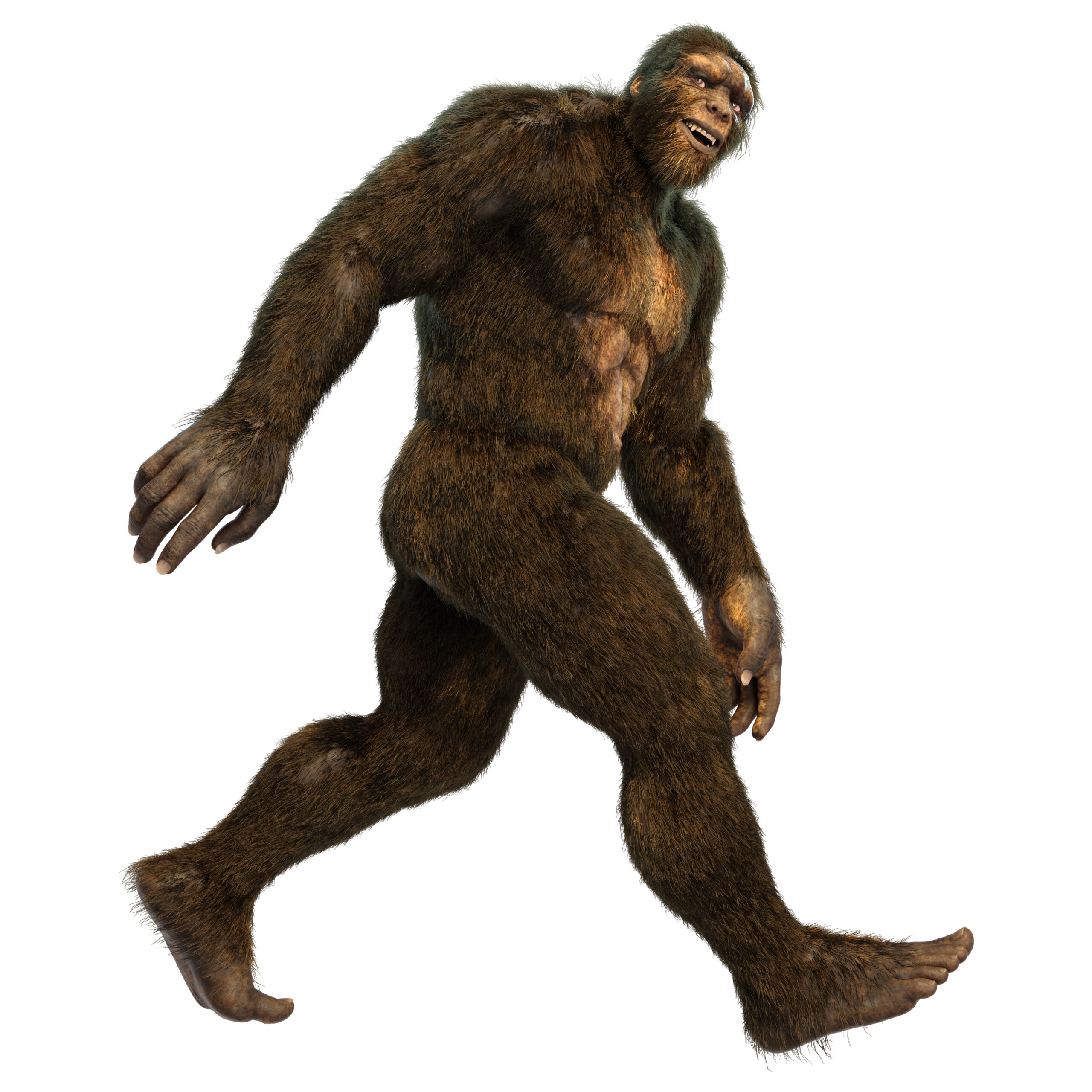Bigfoot, also known as Sasquatch, is a mythical creature that has been the subject of folklore and legend for centuries.
Described as a large, ape-like being with shaggy fur, Bigfoot is said to inhabit remote forests and wilderness areas, mostly in the Pacific Northwest region of the United States and Canada.
Bigfoot has captured the imagination of people around the world and has become an enduring symbol of the unknown.
In this post, we will be exploring the various descriptions and portrayals of Bigfoot’s appearance.
From historical depictions to modern portrayals in popular culture, we will examine how this mysterious creature has been depicted over time and how these depictions might differ from one another.
Whether you are a believer or a skeptic, we hope this post will provide some interesting insights into the enduring mystery of Bigfoot.
Historical depictions of Bigfoot

The earliest known depictions of Bigfoot can be traced back to indigenous cultures in North America.
Many Native American tribes, such as the Haida and the Kwakwaka’wakw, have traditional stories and artwork that depict a large, ape-like creature known as the Sasquatch or the Hairy Man.
These stories often describe the Sasquatch as a powerful and mysterious being that inhabits the forests and mountains, and they often portray the creature as a protector of the natural world.
These early portrayals of Bigfoot have influenced later depictions of the creature in a number of ways.
For example, the traditional stories of the Sasquatch often describe the creature as being large and bipedal, with shaggy fur and a pronounced brow.
These physical characteristics have become commonplace in modern depictions of Bigfoot, and they are often used to distinguish the creature from other mythical animals such as the Yeti or the Abominable Snowman.
In addition to physical characteristics, the traditional stories of the Sasquatch also often depict the creature as being intelligent and capable of communication with humans.
This has influenced later portrayals of Bigfoot as a more sophisticated and nuanced being, rather than simply a brute or a monster.
Overall, the earliest known depictions of Bigfoot have had a lasting influence on how the creature has been portrayed in popular culture, and they continue to shape our understanding and perception of this mysterious being.
Modern depictions of Bigfoot
Over the years, a wide range of physical characteristics have been attributed to Bigfoot.
The creature is generally described as being large and bipedal, with a humanoid shape and a tall, muscular build.
It is often depicted as having shaggy fur, ranging in color from brown to black, and it is said to have a pronounced brow, a large nose, and ears that are either pointed or rounded.
Some descriptions also include additional features such as fangs or claws, though these are less common.
It is important to note that there is a significant amount of variation in the physical descriptions of Bigfoot, and different accounts often contradict one another.
Some accounts describe the creature as being much larger than a human, while others describe it as being only slightly larger.
Similarly, some accounts portray Bigfoot as having a more humanoid appearance, while others describe it as having a more animalistic appearance.
This variation in descriptions can be attributed to a number of factors, including differences in individual sightings, cultural influences, and subjective interpretation.
For example, different cultural traditions may portray Bigfoot differently based on their own folklore and beliefs, and individual sightings may be influenced by factors such as lighting, distance, and the observer’s perspective.
Over the years, a number of physical evidences have been put forward as evidence of the existence of Bigfoot.
The most common type of evidence is footprints, which are said to be much larger and more humanoid than those of any known animal.
Other types of physical evidence include hair samples, which are said to be thicker and coarser than human or animal hair, and photographs or video footage, which are often blurry or inconclusive.
While some people argue that the physical evidence for Bigfoot’s existence, such as footprints and hair samples, is strong and difficult to fake or misinterpret, others are more skeptical.
Skeptics argue that Bigfoot sightings and physical evidence are likely the result of hoaxes, misidentifications, or other explainable phenomena, and that there is no conclusive proof that Bigfoot exists.
However, proponents of the existence of Bigfoot argue that the sheer number of sightings and the consistency of certain physical characteristics described by witnesses suggest that the creature may be real.
Additionally, the fact that no known animal or hoax can fully explain all of the reported sightings adds to the possibility that Bigfoot could be an unknown species from a scientific perspective.
Bigfoot in popular culture
Bigfoot has been depicted in a variety of popular media over the years, including movies, television shows, and video games.
These portrayals often differ significantly from traditional descriptions of the creature, and they can have a significant impact on public perceptions of Bigfoot.
One of the earliest and most iconic portrayals of Bigfoot in popular media is the character of the Sasquatch in the film “Harry and the Hendersons,” which was released in 1987.
In this film, a family adopts a Bigfoot as a pet after accidentally hitting the creature with their car.
The Bigfoot, who is named Harry, is depicted as a friendly and intelligent being, with a softer and more human-like appearance than traditional descriptions of the creature.
The film was followed by a television series of the same name, which aired from 1991 to 1993.
Other popular media portrayals of Bigfoot have taken a more humorous approach, such as the film “Encino Man,” in which a prehistoric Bigfoot is discovered frozen in ice and thawed out in modern times.
In this portrayal, Bigfoot is depicted as a primitive and comical character, with a more animalistic appearance than traditional descriptions.
Bigfoot has also been featured in a number of horror and sci-fi movies, often as a menacing and dangerous creature.
For example, the film “Exists” features a group of friends who are terrorized by a group of Bigfoots while camping in the woods, and the film “The Blair Witch Project” includes a brief reference to Bigfoot in its folklore.
In addition to movies, Bigfoot has also been featured in a number of television shows and video games.
The popular animated series “The X-Files” included an episode about a Bigfoot-like creature called the “Flukeman,” and the video game “Red Dead Redemption 2” includes a side quest in which players can hunt for a Bigfoot.
Popular media portrayals of Bigfoot can vary significantly from traditional descriptions of the creature.
While traditional descriptions often depict Bigfoot as a large, shaggy-furred, and intelligent being, popular media portrayals can range from comical and primitive to menacing and dangerous.
These differences in portrayal can have a significant impact on public perceptions of Bigfoot.
For example, the friendly and intelligent portrayal of Harry in “Harry and the Hendersons” may have contributed to a more positive public perception of the creature, while the menacing portrayal of the Bigfoots in “Exists” may have contributed to a more negative perception.
There have been a number of notable or iconic portrayals of Bigfoot in popular culture over the years.
These portrayals have had a lasting impact on popular culture and have helped to solidify Bigfoot’s place as a well-known and enduring mythical creature.
Final thoughts
So, what have we learned about Bigfoot?
Well, it seems that this mysterious creature has been the subject of folklore and legend for centuries, with various indigenous cultures depicting the Sasquatch in their artwork and stories.
In modern times, a wide range of physical characteristics have been attributed to Bigfoot, including its size, shape, and features such as fur, ears, and nose.
These descriptions can vary significantly, and they may be influenced by factors such as individual sightings, cultural influences, and subjective interpretation.
Popular media has also played a role in shaping public perceptions of Bigfoot, with portrayals ranging from friendly and intelligent to menacing and dangerous.
Some of the most iconic portrayals of Bigfoot include Harry and the Hendersons, Encino Man, and the Flukeman in The X-Files.
So, is Bigfoot real? Well, that’s a question that continues to divide people and spark debate.
Some argue that the physical evidence for Bigfoot’s existence, such as footprints and hair samples, is strong and difficult to fake or misinterpret.
Others are more skeptical, and argue that Bigfoot sightings and physical evidence are likely the result of hoaxes, misidentifications, or other explainable phenomena.
Ultimately, the question of whether or not Bigfoot is real remains a topic of debate and investigation.
Regardless of whether or not you believe in Bigfoot, one thing is clear: this mysterious creature continues to captivate the imagination and spark discussions and debates.
So why not join in on the fun?
Keep an open mind and keep learning about and discussing Bigfoot, and who knows what you might discover!

